THE LIFE CYCLE OF DELONIX REGIA-FLAMBOYANT.
Good day steemians
This is the continous part of my previous post
The life cycle of delonix regia -Flamboyant
•Leave
These are delicate and bipinnate I.e the lamina is divided twice .There are over a thousand small leaflets on each leaf.The tree is deciduous.Nearly all the leaves are shed once a year in October and November new leaves grow in January and February.More leaves grow in June and July as the flowers drop.
Flowers
The first flowers are formed by January and more are formed so that by may and June the trees are covered in bright red flowers.They are borne in inflorescence.Each flower has an attractive white ,yellow and red (honey guide' petal ).The flower wither in July and August as the pods form.
Growth
The main stem divides into several parts,so that in the mature plant the main tank is fairly short.secondary thickening causes the trunk and branches to become woody and covered with grey bari The tree continue to grow each year and reaches a height of 30-50meter.
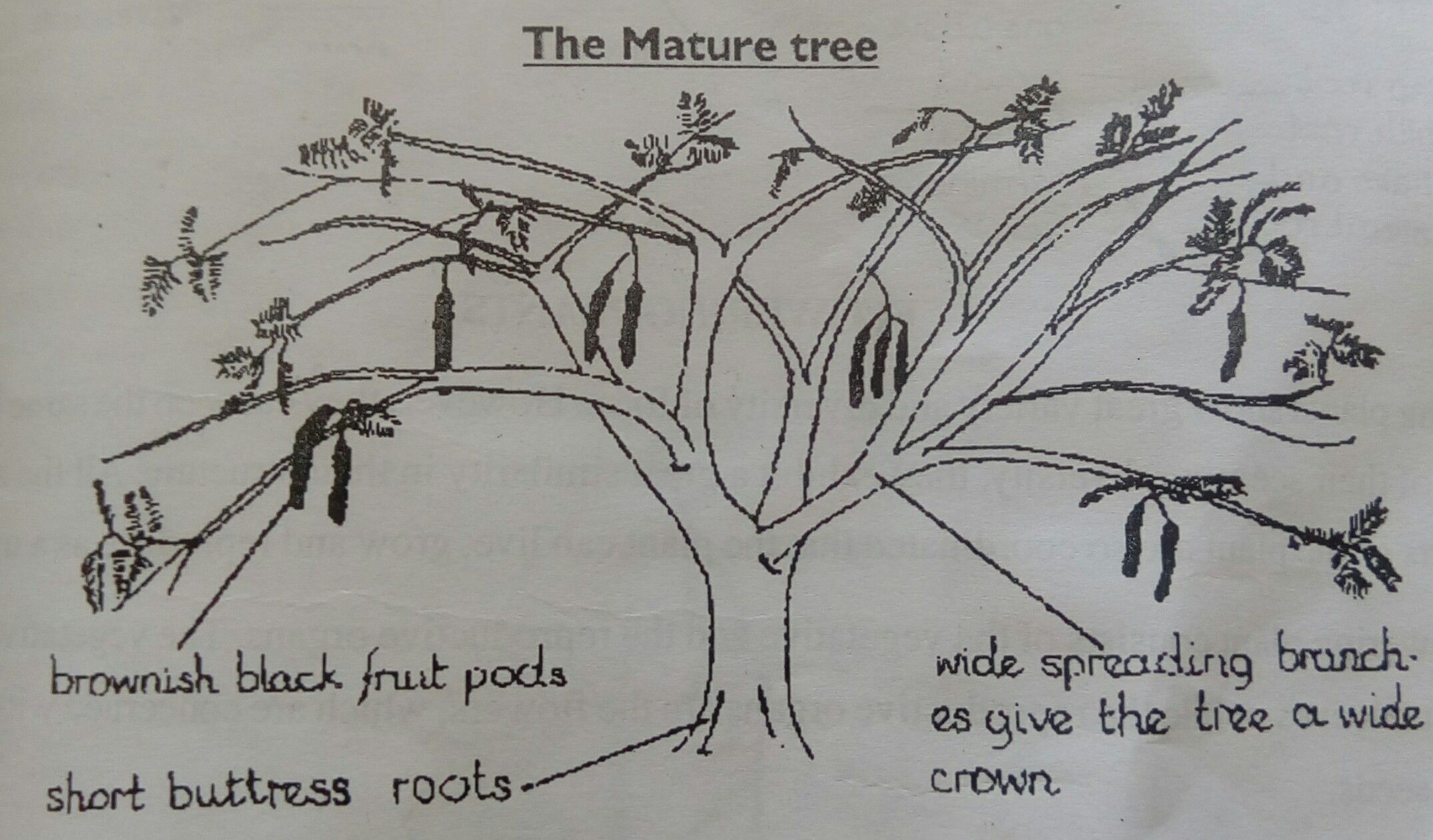
Typical calendar of changes
(variation will be found in individual trees).
November -January:The tree is fairly bare;with no flowers,few leaves and numerous long fruit pods
February-June :pod gradually drop off as the leaves and bright red flowers are formed.By may and June the tree is covered in flowers.july October:Flower drop off as the fruit form.By October leaves begin to drop off also.
Pollination
The flowers attract butterflies by their scent , bright red petals and honey guide' petal while the insect uses its proboscis to suck the nectar at the base of the flowers,some of the pollen from the anther drop onto its body this pollen is then transferred to the stigma to the next flower the butterfly visits.
Formation of fruit
Each ovary contain 30-40 Ovules which are fertilized and form seed Ina way similar to crotalaria. The Ovary begins growing into the fruit in July and August.At first it is a small pod,but soon elongate and gradually becomes a woody pod ,about 2cm long and 2 or 3cm wide.A pod takes about 3months to mature .
Dispersal
In January the pods are dry and may split in the tree and disperse thier seed,or drop unopened to the ground where they rot.
How ever,there are some pods that remain on the tree.
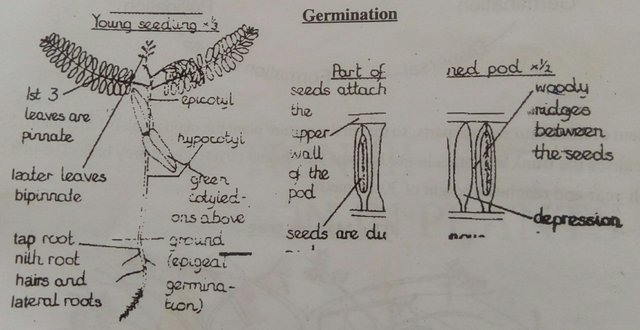
Flowing plant
The flowing plants shows variety and diversity of form.How ever they carry on the same basic activities and in spite of thier seeming diversity, they exhibit a great similarity in their structure.All the activities of different parts of the plant are so coordinated that the plant can live ,grow and reproduction as a unit.
A typical flowing plant consists of the vegetative and the reproductive organs.The vegetative organs are the root ,stem and leaves,while the reproductive organs are the flowers,which are concerned with the production of fruit and seeds.
A TYPICAL FLOWERING PLANT :
THE BALSAM
The balsam (impatient balsamina)
a simple herbaceous flowing plant , consists of an axis which at one end becomes an underground root system and at the other end an Ariel shoot system this is the basic plan of the structure of all flowering plant .
THE ROOT SYSTEM
The root system is the balsam consists of the main root or a tap root from which branch roots grow .The first set of the branch roots grow sideways but the others grow in all direction. Such a root system is called a tap root system.
THE SHOOT SYSTEM
The shoot system is made up of stem the leave, the flowers and the fruit.The stem of the balsam is fleshy and light green in colour.it is made up of nodes and internodes.leaves arises from the nodes and are arranged in a spiral around the stem . Axillary bud grow from the axil of the leaves and these give rise to branches or flowers.A terminal bud lies at the tip of the stem .Each leaf of the balsam is s flat structure with a toothed or serrated edge.
The tips is pointed.T he leaf stalk or petiole, Extend through the leaf blade,or lamina to the form of the mid-rib also know as the main vein.Branchvein with little veinlets
branch out for the mid-rib to form net vernation.The flower are attached to the axile of the leaves by pedicel,or flower stalks .The flower is the reproductive organ of the plant.it has five petal which may be red pink white or purple in colour when it is fertilized,it develop into a fruit which contains seeds the fruit is green and covered with small fine hairs .The seeds are enclosed in the fruit.They are green when young and dark brown when matured.
THE LEAF
It is the flattened,lateral outgrowth of the stem of the branch of the plant.It is normally green in colour however some may be red or yellow while some are green with yellow or white patches (variegated leaves e.g droton and acalypha).food is prepared in the leaf.
Part of a leaf :
A typical leaf consist of the following parts:
•petiole or leaf stalk: The part of the leaf that connect the leaf to the stem .
•Leaf blade or lamina:It is the broad flat and expanded portion of the leaf .
•Leaf base:The broadened part of the leaf that is attached to the stem.
•Leaf apex:The tip of the lamina
•Leaf margin:The edge of the lamina
•Mid rib or main vein:A strong vein that runs centrally through the lamina from the base to the apex.
•Branch vein :part of the mid-ribs that are found on either side of it.
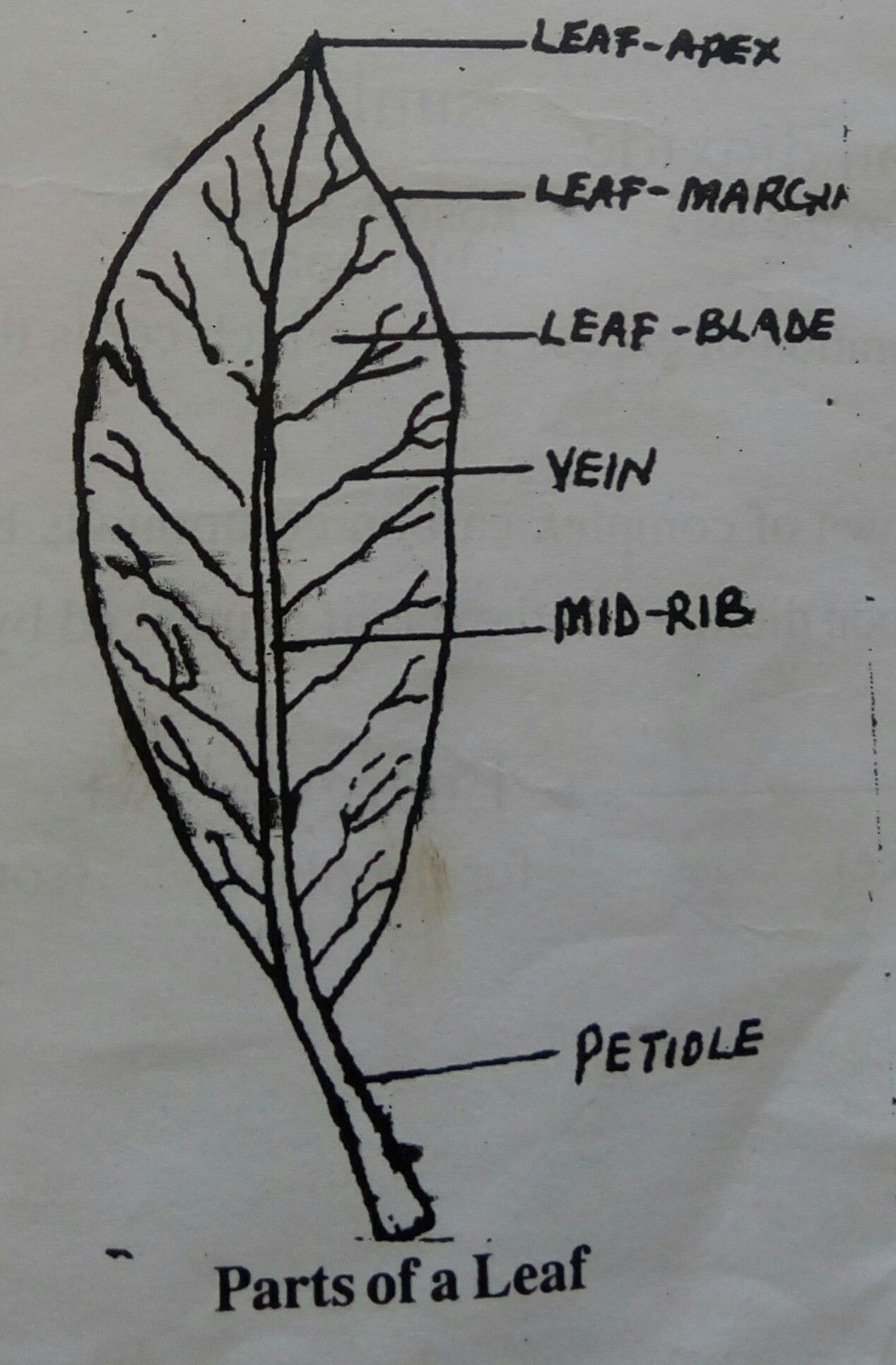
The leaf seems too simple to bother about . Nevertheless, note the Following feature when drawing leaves leaf texture,shape,colour,venation,margin.Note also whether the leaf is simple or compound (a compound leaf has several leaflets,while a simple leaf has a single blade of lamina).Study the leaf venation to determine whether the leaf belongs to a monocotyledons or dicotyledon plant .Do not attempt to draw all the vein just the principle ones.The vein must be drawn from their origin and not just suspended on the leaf blade.
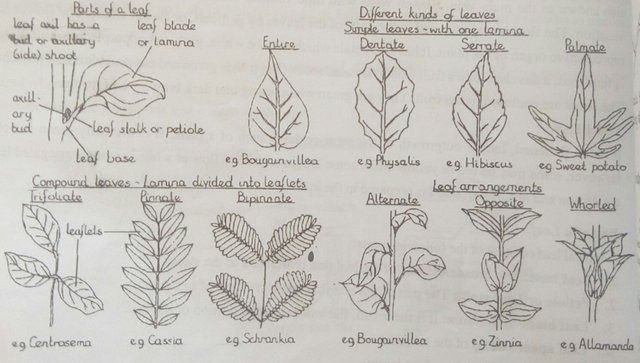
Normal function of leaves
1.Photosynthesis:The building up of complex carbon compounds from water and carbon dioxide in the presence of light energy trapped by chlorophyll.
water + Carbon dioxide - Sugar + Oxygen
This occurs under sunlight absorbed by chlorophyll,water is from the soil carbon dioxide is from the air .Sugar (plant food) Oxygen released into the air.
2.Transpiration-The evaporation of excess water,which cools the plant and creates a suction pressure to draw water up from the roots.
3.Respiration : The breakdown of complex carbon compounds by oxygen with the release of energy and production of water and carbon dioxide.In the day it is masked by photosynthesis.
Oxygen + Sugar - Energy + water + Carbon
Oxygen from the air
sugar (energy source)
Energy for plant
water (some evaporates)
carbon dioxide released into the air.
special function of leaves
A.CLIMBING-Different part of the leaf are sensitive to touch and twine or hook around supports lamina tendrils formed from the tip of the leaf blade.
2.petiole Tendrils -Formed from the leaf petiole.
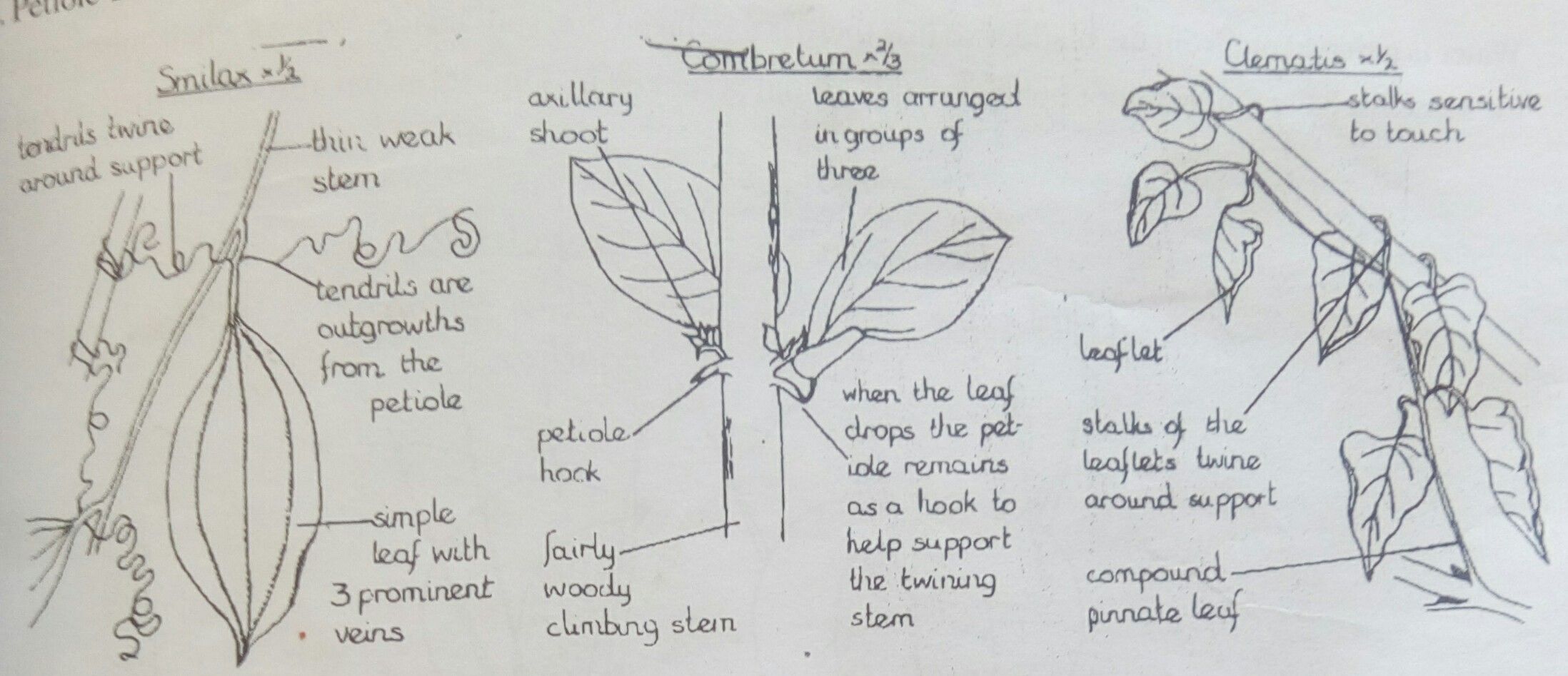
B.Food storage and vegetative reproduction.
C.water conservation:Leaves are reduced to small size e.g casuarinas or absent altogether e.g Opuntia.
D.Catching insects:The leaves of insectivores plant are specially modified to trap insects.The leaves also produce juice to digest the soft part and are able to absorb the digested food to extract nitrogen.
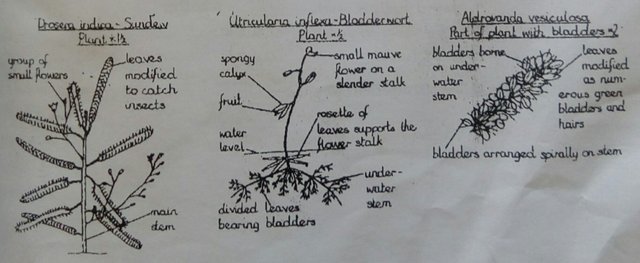
Hairs at edge of the leaf are sensitive to touch and produce a sticky substance as they bend over to trap the prey.Tge hairs then secrete a digestive juice and after digestion,the food is absorbed.Then the hairs open again ready for another insect.
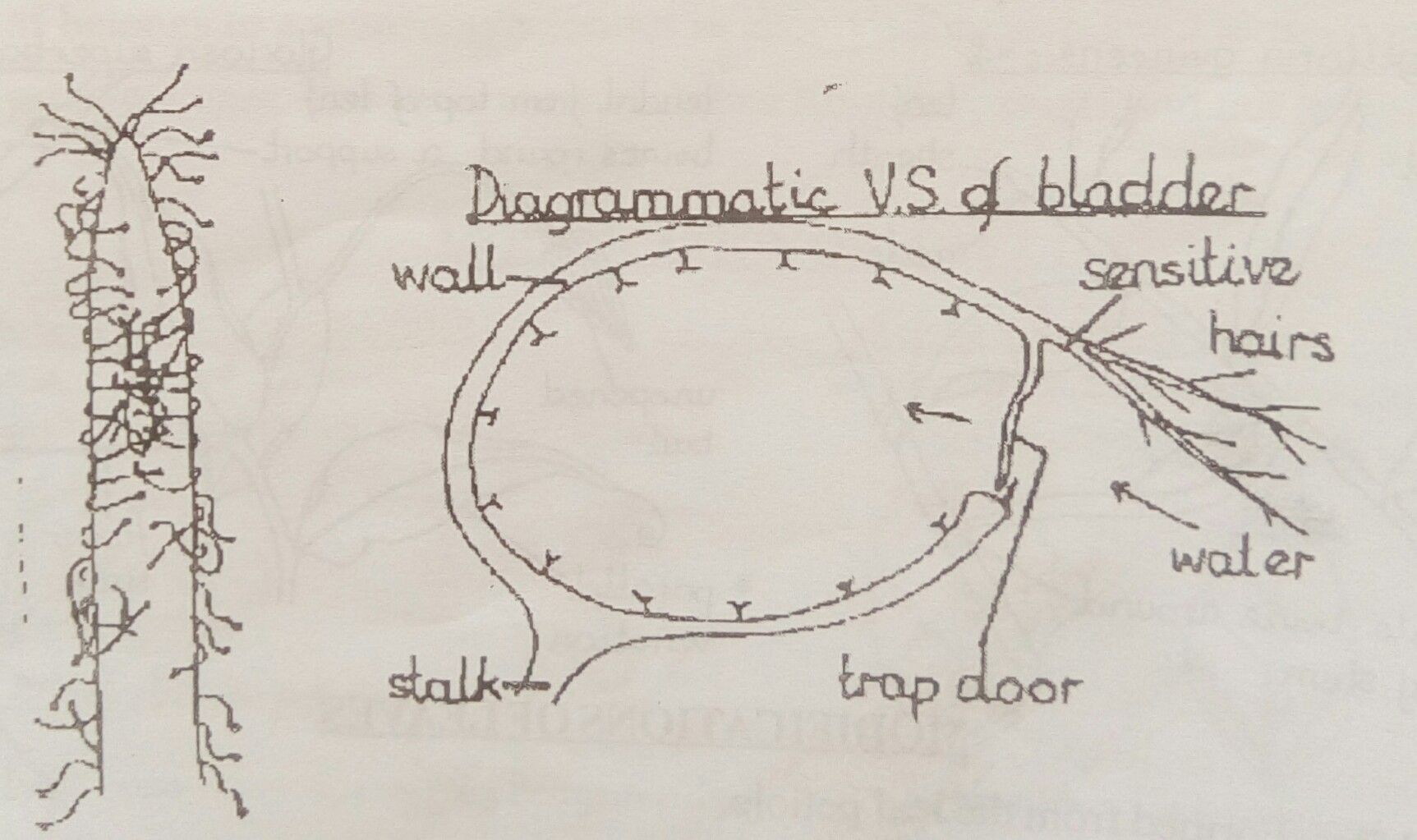
water is pumped out from the bladder so that there is a reduced pressure inside when a small animal touches the sensitive hairs the trap door open and the animal is sucked in.Digestion and absorption then take place.
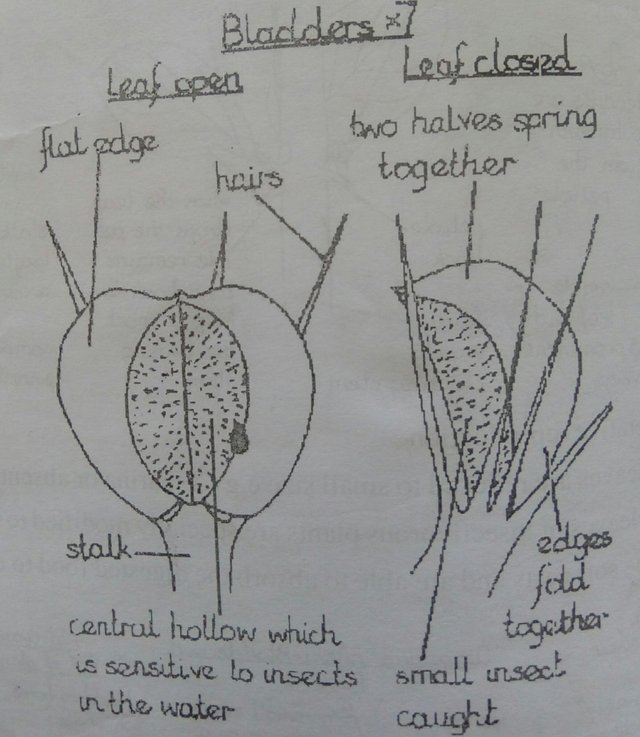
The insect is trapped in the hollow and digestion takes place
Reference
Source
Pictures are taken with by self phone from standard biology pratical textbook.

Excellent article, images are great, I thought I had a green thumb...until I read this...I learnt plenty. Thank you @jpkonkz #1❤️ And yes indeed great follow up...can’t wait until the next one...
Thanks buddy!
#1❤️
Thanks